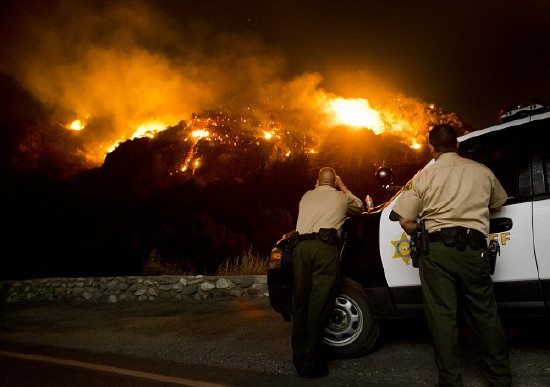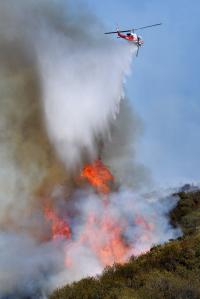
Los Angeles County Sheriff's deputies Matthew Bound, left, and Gabriel Duran watch as wildfire burns above Camp Williams in the Angeles National Forest near Glendora, Calif., on Tuesday night, Sept. 3, 2012. (SGVN/Staff photo by Watchara Phomicinda)



 Los Angeles County Sheriff's deputies Matthew Bound, left, and Gabriel Duran watch as wildfire burns above Camp Williams in the Angeles National Forest near Glendora, Calif., on Tuesday night, Sept. 3, 2012. (SGVN/Staff photo by Watchara Phomicinda) |

 ANGELES NATIONAL FOREST - Firefighters are continuing to get the upperhand on the Williams Fire that erupted last weekend, with containment lines built around 72 percent of the wildfire, authorities said Friday.
ANGELES NATIONAL FOREST - Firefighters are continuing to get the upperhand on the Williams Fire that erupted last weekend, with containment lines built around 72 percent of the wildfire, authorities said Friday.